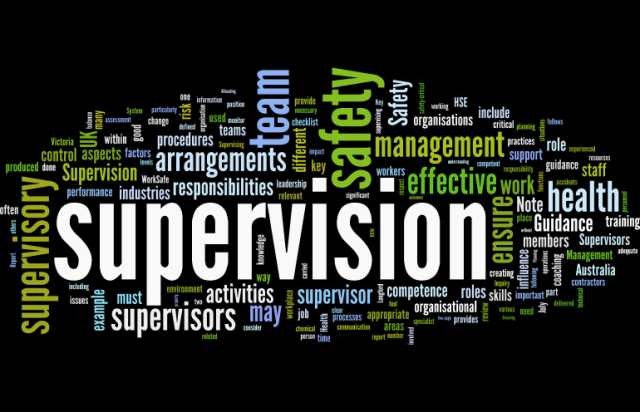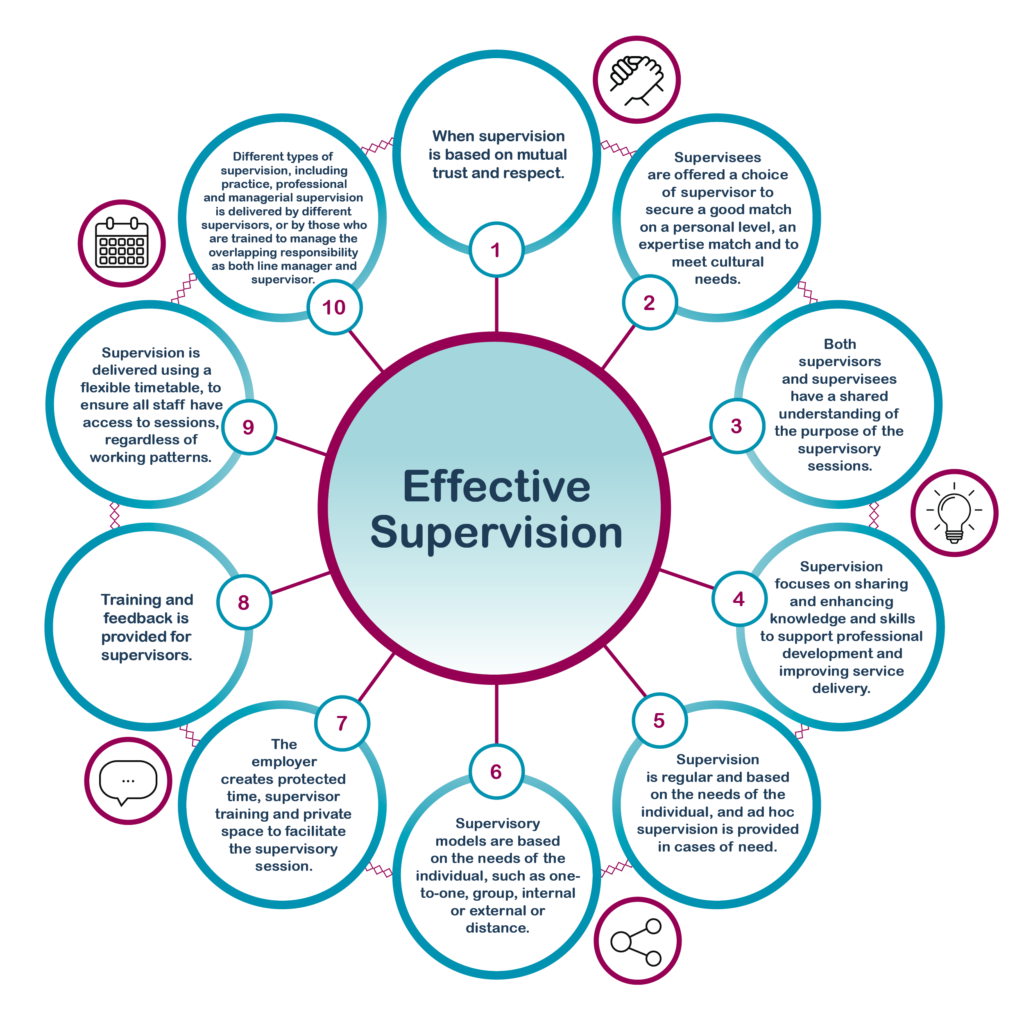
Table of Contents
Introduction
Indian workers haven’t always given their jobs their undivided attention. In India, management skills are also in limited supply.
The management is often in need of excellent executives and managers. Effective managers keep an eye or maintain supervision on their employees’ work.
In order to meet immediate goals, performance must be monitored.
At every level of management, performance is monitored from the top i.e, supervision is performed by top management.
The effectiveness of the management members is monitored by top management and middle management.
However, employees are managed by members of bottom management, who also monitor their performance.
Members of bottom management interact with employees on a daily basis. A high level of supervision is required of members of the lowest management. they are referred to as first line managers.
First-line supervisors keep an eye on the work being done. So, to be a supervisor is to watch over workers while they are at work.
A person who is in charge of monitoring workers’ job performance is referred to as a supervisor.
There are several names for supervisor. They include: the foreman, the departmental head, the chargehand, the departmental incharge, the overseer, the sectional head, the head clerk, the chargeman, the chief clerk, the head assistant, the inspector, the superintendent, or the section officer, among others.
Functions of Supervisor
The job of a supervisor immediately affects employee actions that are crucial to accomplishing an organization’s goals.
Therefore, the manager is considered as the key figure in management. The supervisor typically carries out the following duties:
- He issues commands, offers directions, and enforces laws.
- He transforms the objectives, plans, strategies, and materials into goods and services.
- He establishes appropriate working environments or climates.
- He assigns tasks, establishes protocols, and suggests approaches.
- He sets up equipment and supplies for the employees.
- He imparts technological expertise to employees.
- He inspires the staff by showing them how successfully they can do their duties.
- He sets a good example for others in his group or under him.
- He listens to his subordinates’ problems and frustrations and works to address them.
- He may, if necessary, inform upper management of the concerns or sentiments of his subordinates.
- He has power over how well employees perform.
- He suggests that his subordinates be given promotions, transferred, and paid more.
Check here for latest case studies and research book : https://kit.co/Anurooba/case-analysis-text-books
Responsibilities of Supervisor
In any sort of organisation, the supervisor’s job is a crucial one. is in charge of employees who are directly involved in the organization’s core functions.
The operation’s effective completion falls largely under the supervision of the supervisor.
The use of the machinery and equipment is made efficient by the supervisor’s placement of the personnel.
The following headings are used to group the supervisor’s duties:
A. Obligations to coworkers or inferiors.
B. Management-related obligations.
C. Responsibility for carrying out his own tasks.
D. His obligations to his coworkers.
A. ResponsibilitiesToward Employees OR Subordinates
- The supervisor gives his employees or subordinates directives and instructions.
- The supervisor tries to gain the respect of his employees.
- The manager has to foster a feeling of teamwork among the employees.
- The supervisor must establish work schedules, processes, and techniques.
- The supervisor must pay attention to the grievances and issues of his staff members and assist in finding solutions.
- The supervisor must provide up training opportunities for newly hired employees.
- A supervisor must inspire his staff members and recognise effective job performance.
- The boss must serve as an example for his employees.
- The manager is responsible for maintaining order among the staff.
- The supervisor must pay attention to the ideas made by the subordinates and then make recommendations to them based on the situation.
- The supervisor must clearly convey to his staff what the organization’s goals are.
B. Responsibility towards Management
- The supervisor must update the management on the assignment’s status.
- The supervisor is required to let management know about any issues or challenges the subordinates are having.
- The supervisor must cooperate with his superiors and, if necessary, take on additional responsibilities.
- The supervisor must make sure that the task is carried out as his superiors have requested.
- The supervisor must serve as an effective link between the management and employees.
- The supervisor should take measures to operate more economically.
C. Responsibilities towards his own Function
- The supervisor must carefully prepare the tasks that are given to him.
- The manager must assign the task to his staff members based on aptitude and interest.
- The supervisor is responsible for carrying out management’s policies and plans.
- The supervisor must acquire the supplies and equipment and perform routine inspections.
- The supervisor must get familiar with the most recent production procedures and quickly adopt them.
- The manager must organise the workforce.
- The supervisor must monitor the performance of his employees and provide recommendations for future development.
- The supervisor must initiate all necessary actions to put the management’s goals and policies into effect.
- The manager must take action to increase the output of his employees.
D. Responsibilities towards his Colleagues
- The supervisor must cooperate with his subordinates.
- The supervisor must take into account and accept his coworkers’ criticism of his goals.
- The supervisor must consent to the employee’s move from one department to another.
- If necessary, the supervisor must provide other departments with vital information.
From time to time, the supervisor’s duties are modified. The supervisors handled personnel issues in the 19th century. The personnel department is now in charge of handling personnel concerns.
The recruiting, firing, remuneration, punishment, training, placement, and advancement of workers are all considered to be personnel concerns.
The efficient use of human labour justifies acknowledging the supervisor’s responsibilities.
Qualities of Supervisor

The supervisor’s characteristics are highlighted in the previous description of his duties.
Additionally, the supervisor’s primary concern is maximising productivity at the lowest possible cost.
The manager must thus do his job honestly and sincerely. The traits of a supervisor are highlighted by the following points:
- Technical expertise: The supervisor should possess the essential technical expertise for his position. He should also understand how to use this technological knowledge to his job effectively.
- Organizational knowledge: For the supervisor to perform his duties effectively, he or she should be familiar with organisational concepts.
- The supervisor should be aware of the level of power delegation that is advantageous to the organisation, the number of members who are really under their supervision, the duties that call for specialisation, etc.
- Effective communication skills: An effective communicator is a supervisor. To be understood, he must talk in straightforward terms. He needs to express himself clearly. Tone variations are more efficient in communicating concepts than long passages of speech. The supervisor must speak in terms that his subordinates are familiar with.
- Administrative skills: The supervisor should possess administrative skills. He should be skilled at persuading his subordinates or employees to cooperate or coordinate.
- Listening skills: It’s important to pay attention to the supervisor. The rationale is that the supervisor should listen to what his employees have to say, learn from their experiences, and comprehend the challenges they encounter. The supervisor shouldn’t give the impression to the staff that they are being ignored or that their concerns won’t be taken seriously.
- Honesty: The boss ought to be a guy of integrity and honesty. His actions and choices should serve as evidence of his sincerity and moral character.
- Memory: The supervisor must be able to recall both the commands he got from higher-ups and the instructions he gave to his employees. The manager is not expected to remember everything, but he should remember everything important.
- Recognize and respect other people’s emotions: The manager should use a delicate approach. In order to respect sentiments, he should listen to his subordinates’ issues when they are brought up and bring them up to the top management for resolution.
- The capacity for organised thought: The supervisor’s duties include organising, directing, coordinating, and controlling. He should thus be aware of how to execute tasks in a systematic manner. Through organised thought, tasks may be completed in a timely manner.
- Complete information: The manager should be fully aware of all of his employees. Each subordinate’s aptitude, qualification, area of interest, experience, and willingness need to be known to the supervisor.
- The capacity to appraise people: The supervisor should be able to fairly evaluate employees. It aids the manager in ensuring that his responsibilities are completed.
- Physical appearance: The supervisor’s physique should be more dominating than that of his subordinates.
- Patience: The boss should maintain his composure when his employees make errors. Instead of penalising his employees, the boss should make the necessary corrections. The supervisor should not be upset with his employees; instead, he should explain to them the repercussions of their errors.
- A manager has to be inspired by himself in order to properly inspire his staff.
- In front of his subordinates, the supervisor shouldn’t vent his dissatisfaction over his position, pay, or working circumstances. His subordinates will get irritated as well if he does this.
- The boss must be self-assured and should encourage his employees to be as well.
Principles of Supervision
The following is an explanation of the supervisory principles:
- The achievement of the organization’s goals is ensured by the efficient use of supervision.
- The supervisor is responsible for providing efficient supervision.
- The organization’s acceptance of the supervisor’s function and their effectiveness are factors in their effectiveness.
- The supervisor should evaluate his team and choose which course of action best advances the organization’s goals. This makes effective supervision possible.
- The successful meeting of group requirements is a prerequisite for any supervisor’s success.
- The survival of the group and its advancement toward its goals serve as the standards by which the supervisor’s effectiveness is assessed.
Types of Supervision
The methods used by the supervisor are used to categorise the different forms of supervision. This categorization of supervision is as follows:
- Autocratic or authoritarian supervision: In this kind of supervision, the supervisor is fully in charge and accountable for all group decisions. There is no interaction between the supervisor and his staff members. but merely demands compliance. In this situation, the boss continuously directs the workers on what to do, how to accomplish it, etc. In other words, the boss may be described as a “do this, do that” boss.
- Independent or free-rein supervision: In this scenario, the superior does not interfere with the work of the subordinate. He seeks to exert the least amount of control. The supervisor’s key responsibilities include overseeing the purchase of raw materials, obtaining information on rules and regulations from upper management, and communicating such information to his subordinates. The supervisor may act as a mediator to find a solution to the subordinate’s issues.
- Democratic governance: It is based on democratic ideals. Only after hearing thoughts and proposals from his subordinates does the supervisor make a choice. They are welcome to speak and consult with the supervisor at any time. In other words, the supervisor has complete trust in and authority over his employees.
Kinds of Supervisors
Depending on the kind of supervision he uses, different supervisor types are categorised. The following types of supervisors have been established by Prof. R.K. Burns:
- Bureaucratic regulation: The supervisor established (or abided by) the laws and regulations. Personal interaction with subordinates is quite uncommon. To the greatest degree feasible, the supervisor refrains from speaking with either superiors or subordinates.
- Autocratic directive: The supervisor only uses one-way communication. who seeks more authority and accountability. The supervisor has tight control over his staff and excels in the technical aspects of the position. He does not take into account the subordinate’s attitudes since he wants to do more work. The supervisor has greater control over the employees. Therefore, the subordinates show the boss minimal regard.
- The supervisor has close relationships with both upper management and subordinates. He has experience leading subordinates. He is concerned about his safety and progress. The subordinates in this situation are self-centered. The boss is a laid-back person.
- Democratic-integrative: This sort of manager strives to create a true team environment. The manager is interested in security, recognition, and growth for both himself and his employees. He practises a give-and-take approach with his staff members. The supervisor has an honest two-way conversation. Interest in the group drives the boss.
A BEST WAY TO EARN WHILE YOU STUDY, JOIN THIS APP UPLOAD PHOTOS, SAVE MONEY FROM NOW ON : https://bit.ly/3g7PxAg
Supervisory Techniques

A supervisory technique is a strategy or process to be used while supervising others.
The use of supervisory techniques is based on the attitude of the subordinates.
The kind of supervision is determined by the supervisor’s method. The following are some of the supervisory techniques:
- Democratic or consultative method: A supervisor will only choose which techniques or processes to use after discussing with his staff. Under this method, all democratic values are applied. The subordinates are given a chance to voice their thoughts. The supervisor becomes more self-assured and
- Authoritarian or dictatorial method: The administration that has centralised authority uses this style. As a result, the supervisor has greater influence over his employees. The management’s established processes and procedures must be scrupulously followed by the subordinates. While not appropriate for the current commercial environment, this method works well in unorganised labour situations.
- Non-interfering or fee-rein technique: The subordinates are free to choose from among the various organisational techniques or processes. The quality and quantity of the product are important to the supervisor. The boss serves as a consultant and aids the staff members in finding solutions to issues. Under this strategy, subordinates reveal hidden skills.
Im very pleased to find this page. I wanted to thank you for your time due to this wonderful read!! I definitely savored every bit of it and i also have you bookmarked to check out new information in your blog.